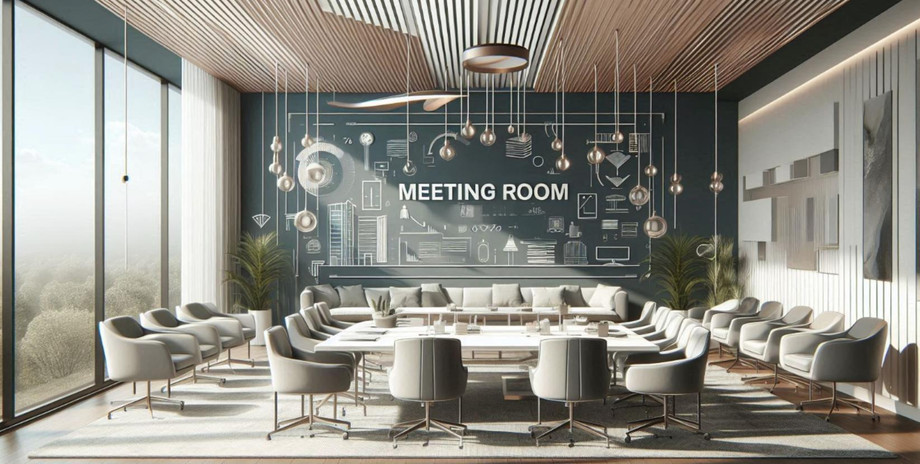Designing a meeting room that is both functional and appealing can be challenging. A well-designed space can boost productivity, while poor design can lead to distractions and inefficiency. Here are some common mistakes in meeting room design and tips on how to avoid them.
1. Neglecting the Room’s Purpose
One of the most common mistakes is not considering the primary purpose of the meeting room. Different meetings require different setups. For instance, a room meant for brainstorming sessions should have a layout that encourages collaboration, like round tables or movable furniture. On the other hand, a room for presentations might need theater-style seating. Understanding the room’s main use will help you choose the right office furniture and layout, making the space more effective.
2. Poor Lighting Choices
Lighting plays a crucial role in how a room feels and functions. Too much light can cause glare, while too little can make the space feel dim and uncomfortable. Natural light is ideal, but if that’s not possible, opt for adjustable lighting. This allows you to change the lighting based on the task at hand, whether it’s a presentation or a video conference. Ensure that the lighting complements the room’s purpose and creates a comfortable environment for everyone.
3. Inadequate Technology Integration
In today’s digital age, technology is a vital part of any meeting room. However, many designs fail to properly integrate technology, leading to clutter and frustration. Cables should be hidden, and there should be easy access to outlets and charging stations. Additionally, make sure that the room has the right equipment, like screens for presentations, video conferencing tools, and sound systems. Properly integrated technology can make meetings run more smoothly and efficiently.
4. Ignoring Acoustics
Acoustics are often overlooked in meeting room design. Poor acoustics can lead to echoing or muffled sounds, making it difficult for attendees to hear and communicate effectively. To improve acoustics, consider adding sound-absorbing materials like carpets, curtains, or acoustic panels. These can help reduce noise levels and create a more comfortable auditory environment, making sure everyone is heard clearly.
5. Overlooking Comfort and Ergonomics
Comfort is key in a meeting room, especially for long sessions. If the furniture isn’t comfortable, it can distract participants and reduce productivity. Choose ergonomic chairs that provide good support, and consider adjustable furniture that can accommodate different body types and preferences. Comfort also includes the room’s temperature, so make sure the space is well-ventilated and has climate control.
6. Inflexible Layouts
An inflexible layout can limit how you use the meeting room. Fixed furniture or a rigid setup can make it difficult to adapt the space for different types of meetings. Opt for movable furniture that can be easily rearranged to suit various needs. This flexibility allows the room to be used for different purposes, from small team meetings to larger presentations.
Designing a meeting room that is both functional and inviting requires careful planning. By avoiding these common pitfalls, you can create a space that enhances productivity and meets the needs of everyone who uses it. Whether it’s through proper lighting, comfortable furniture, or flexible layouts, each element plays a crucial role in the room’s overall effectiveness. Take the time to consider these factors, and you’ll end up with a meeting room that works well for any occasion.

